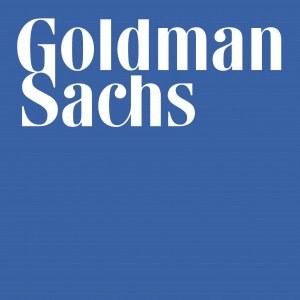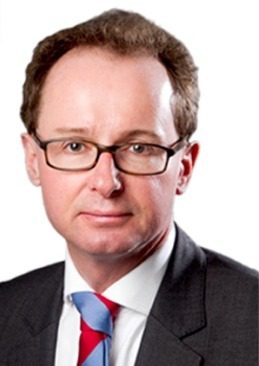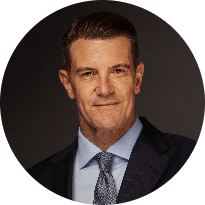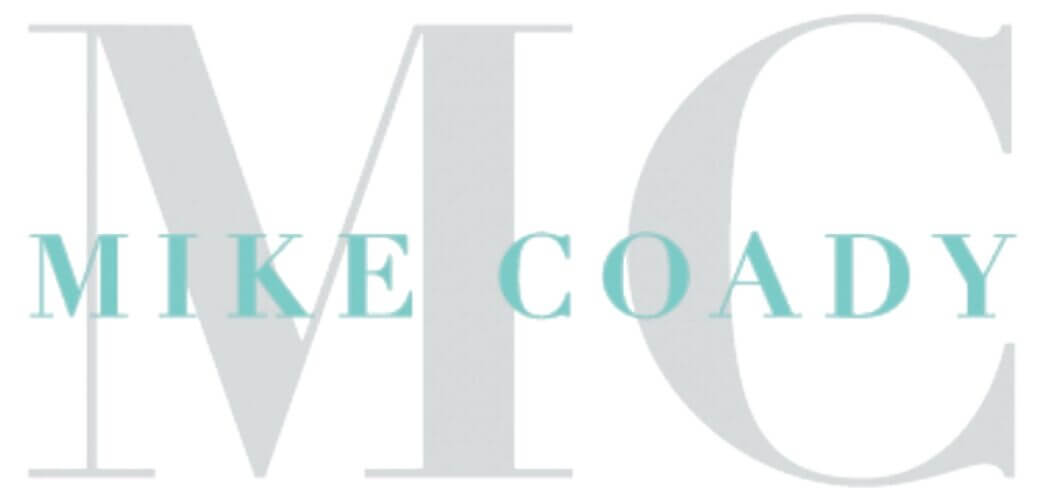
Home Goldman Sachs Asset Management considers the markets and the relationship with deVere Group

Goldman Sachs Asset Management considers the markets and the relationship with deVere Group
In a three-part series, I have asked three of the major institutions with which deVere Group has robust, long-term, established alliances, for their retrospective on 2013, their outlook for 2014, their cautionary advice for the year ahead, and for their take on the relationship between deVere and their organisation.
Here, in the third and final part of the series, we hear from Goldman Sachs Asset Management (GSAM).
In general terms, how would you review, and put into context, the markets over the last 12 months?
Three themes drove much of the market activity in the last 12 months: 1) the beginning of the end of ultra-loose monetary conditions, 2) the recovery in developed market economic growth and 3) the weakness in the Emerging Markets (EM).
- 1) The US Fed’s announcement in May of its intention to begin the “tapering” of quantitative easing asset purchases was perceived as a first step toward tightening after years of easy financial conditions. The news and rippled through global financial markets, sending US treasury yields to recent highs while equity markets, particularly in the EM, which have benefitted from the policies in the developed markets. Speculation on when the tapering would start remained a key driver of markets until December, when the Fed confirmed it would begin reducing asset purchases in January 2014. By the end of 2013, rates were sharply higher and the 12-month return in a number of higher yielding fixed income sectors had turned negative.
- 2) While the Eurozone economy still contracted 0.5% during 2013, it actually began to grow in the second quarter, after six consecutive quarters of contraction, and investors began to look toward positive growth in 2014. Sentiment on Europe changed dramatically throughout the course of the year as many investors went from bearish to bullish on European equities. Although the US economy grew at its slowest pace since the financial crisis, it posted the strongest GDP growth of major developed market regions in 2013. The S&P 500 continued to make new record highs into December, reflecting the improving economic growth, the housing market recovery and declining unemployment. Japan’s economy also grew in 2013, but the main story was the big stimulus and bold reforms of Abenomics, including an inflation target of 2%, which the Japanese equity market soaring to multi-year highs, while the yen sank to multi-year lows and yields on Japanese Government Bonds (JGBs) fell.
- 3) EM equity markets suffered one of their worst years versus developed equity markets as economic growth slowed from previous exceptionally high levels. In some cases, equity valuations were cheaper than historical or developed market averages, reflecting a variety of challenges to reigniting growth such as inflation (India), declining commodity prices (most of Latin America) and growing social unrest (Brazil and Turkey), as well as the anticipated end to ultra-loose monetary conditions in the developed markets. As investors began to focus on a growing number of current account deficits, Emerging Market debt was one of the worst performing asset classes in 2013.
How will what has taken place in 2013 affect what is likely to happen in 2014? What will be the standout differences between this year and next?
For 2014, we expect a broad-based acceleration in global growth towards trend, at a gradual pace. In terms of high level themes, we see the developed world—particularly the US—set to spearhead the improvement in growth momentum, a continuation from 2013. Despite moderately higher global interest rates, the turnaround in the global cycle should allow many Growth and EM countries to gradually break out of the sluggish growth spell of the past two years.
For 2014, we expect a continuation of the upward trend in rates we saw in late 2013. Against this backdrop, we think government bonds and other fixed income sectors that have benefitted directly from Fed intervention will underperform, while riskier sectors that tend to benefit from growth should perform well. We also think that strengthening growth should be supportive of the US dollar. Outside of the US, we expect to see more differentiation within different sectors. Picking the right bonds, not just the right sector, will be increasingly important to generating attractive returns.
We believe stocks can go higher in the current “growth phase” of the equity market, when real earnings growth is an important driver of performance. Equities have rallied substantially, but largely on multiple expansion which is typical of the “recovery phase” of an equity market cycle. We now believe acceleration in earnings growth, could further lift the prices of stocks that deliver it. In our view, stock selection will be more critical to generating returns in this phase of the market cycle as companies differentiate themselves on earning growth and valuation.
We believe the Developed Markets are more likely to benefit in this part of the equity cycle, when accelerating earnings growth will likely be a big contributor to increasing equity prices as valuations are already close to historical averages. We also believe areas of the market related to the previous economic environment—commodity-related industries and yield-oriented sectors—are unlikely to be the winners in 2014. Instead we expect that innovative companies and industries will benefit in a growth- oriented environment. Information technology (IT), biotechnology, pharmaceutical and medical device companies should benefit from increased R&D spending and M&A activity as they depend on innovation and growth to remain competitive. IT companies and select industrial businesses could be big beneficiaries of pent-up demand and increased corporate spending.
What would be your overriding cautionary advice or ‘word of warning’ for the year ahead?
We would advise investors to be cognizant that, as large-scale liquidity is removed from the system, opportunities to generate alpha are more likely to come from trades expressing relative value and idiosyncratic views rather than market-directional views. In an environment where many fixed income sectors appear close to fairly valued and rates are poised to continue to rise, more traditional fixed income strategies that have a large duration component will underperform.
With regards to equity markets, anything that dampens growth momentum could be a risk. For example, a pause in reforms of the Japanese economy or the European banking system, or governments negatively surprising, such as increasing partisanship in the US or issues with upcoming Growth and Emerging Market elections, might impact our view. Similarly, if the global growth does not accelerate as expected or revenue growth fails to materialize in the US, this could be a risk to equity markets. While we believe that central banks tightening too quickly would be negative, a modest increase in interest rates is consistent with improving economic growth and would not be a risk to our view.
Can you outline why the working relationship with deVere has proven to be mutually beneficial and how it works on a practical, functional level to achieve results?
GSAM is headquartered in New York and has offices around the world. Similar to deVere, we firmly believe that investment ideas are enriched by global expertise and local insights and that proximity to clients in various regions creates strong working relationships. Our local presence enables us to service deVere locally and in a timely matter.
Thus far we have conducted a number of conferences and training sessions for deVere advisors and their clients globally. Therefore we continue to offer our support to deVere and their clients.
We offer deVere advisors a monthly portfolio review podcast with the Portfolio Manager to highlighting recent portfolio performance and to share our macro overview and outlook. We believe that this provides advisors with current insight on performance drivers and our views on recent market conditions. This in turn, supports them when communicating to their clients.
Please can you explain how your product range benefits deVere advisers and, in turn, our clients?
Goldman Sachs has committed significant resources to its asset management business, developing it into a global, diversified product provider. We offer our clients access to all major global asset classes and recognise that both segregated and mutual fund products appeal to different clients depending on their objectives. We believe our three key strengths benefits deVere advisers and, in turn, your clients:
- 1) Strategic Asset Allocation: Diversification of returns
- 2) Tactical Asset Allocation: Enhancing returns
- 3) Risk Management: Protecting value
We bring 144 years of financial experience that we believe deVere and their client can benefit from. Goldman Sachs Asset Management (GSAM) was able to find three investment solutions to the multiple challenges that deVere clients are currently facing: market volatility, low interest rates, complex investment solutions, globalisation and time consuming efforts. Since the beginning of 2013 GSAM have launched three multi asset portfolios that are designed to meet different investment needs and are exclusively available through deVere1:
- · A Portfolio that could help you generate income
- · A Portfolio that aim for capital preservation
- · A Portfolio that target long-term growth
Combining the resources of a large global firm with the focus of a specialist boutique, GSAM’s independent investment teams offer a broad range of competitive products across asset classes, regions and the risk spectrum. The organisation is also dedicated to risk management and risk optimisation.
1 These portfolios are solely available via a life insurance product/QROPS product. The life insurance provider has appointed GSAM as sub-adviser.
General Disclosures
THIS MATERIAL DOES NOT CONSTITUTE AN OFFER OR SOLICITATION IN ANY JURISDICTION WHERE OR TO ANY PERSON TO WHOM IT WOULD BE UNAUTHORIZED OR UNLAWFUL TO DO SO.
The views and opinions expressed are those of the speaker, for informational purposes only and do not constitute any investment advice or recommendation by Goldman Sachs. We have relied upon and assumed (without independent verification) the accuracy and completeness of such information and neither agree nor disagree with the content herein.
There is no guarantee that these objectives will be met.
Portfolio holdings may not be representative of current or future investments. The securities discussed may not represent all of the portfolio’s holdings and may represent only a small percentage of the strategy’s portfolio holdings. Future portfolio holdings may not be profitable.
The portfolio risk management process includes an effort to monitor and manage risk, but does not imply low risk.
Although certain information has been obtained from sources believed to be reliable, we do not guarantee its accuracy, completeness or fairness. We have relied upon and assumed without independent verification, the accuracy and completeness of all information available from public sources.
Past performance does not guarantee future results, which may vary. The value of investments and the income derived from investments will fluctuate and can go down as well as up. A loss of principal may occur.
Economic and market forecasts presented herein reflect a series of assumptions and judgments as of the date of this presentation and are subject to change without notice. These forecasts do not take into account the specific investment objectives, restrictions, tax and financial situation or other needs of any specific client. Actual data will vary and may not be reflected here. These forecasts are subject to high levels of uncertainty that may affect actual performance. Accordingly, these forecasts should be viewed as merely representative of a broad range of possible outcomes. These forecasts are estimated, based on assumptions, and are subject to significant revision and may change materially as economic and market conditions change. Goldman Sachs has no obligation to provide updates or changes to these forecasts. Case studies and examples are for illustrative purposes only.
In the United Kingdom, this material is a financial promotion and has been approved by Goldman Sachs Asset Management International, which is authorized and regulated in the United Kingdom by the Financial Conduct Authority.
Confidentiality
No part of this material may, without GSAM’s prior written consent, be (i) copied, photocopied or duplicated in any form, by any means, or (ii) distributed to any person that is not an employee, officer, director, or authorized agent of the recipient.
© 2014 Goldman Sachs. All rights reserved. Compliance Code: 121235.OTHER.OTU
Related
You May Also Like

Choosing the right school for your Children
The UAE, particularly Dubai and Abu Dhabi, offers a multitude of educational opportunities for children, with a diverse...

A fortnightly look at global financial markets – 25 October 2016
The following is a detailed commentary and analysis from deVere Group’s International Investment Strategist, Tom Elliot regarding: Is...

Family Wealth Manager praises mentoring at Stapleford Park
When Albert Einstein said: “The only source of knowledge is experience” I believe he wasn’t too far away...
DISCLOSURE:
mikecoady.com, the website, does not provide financial, investment or tax advice. It is specially designed to provide its users with general information. It does not give individual or specific advice on which products or services are the most appropriate for an individual’s particular circumstances. We may from time to time publish content on this site that has been created by affiliated or unaffiliated contributors.




